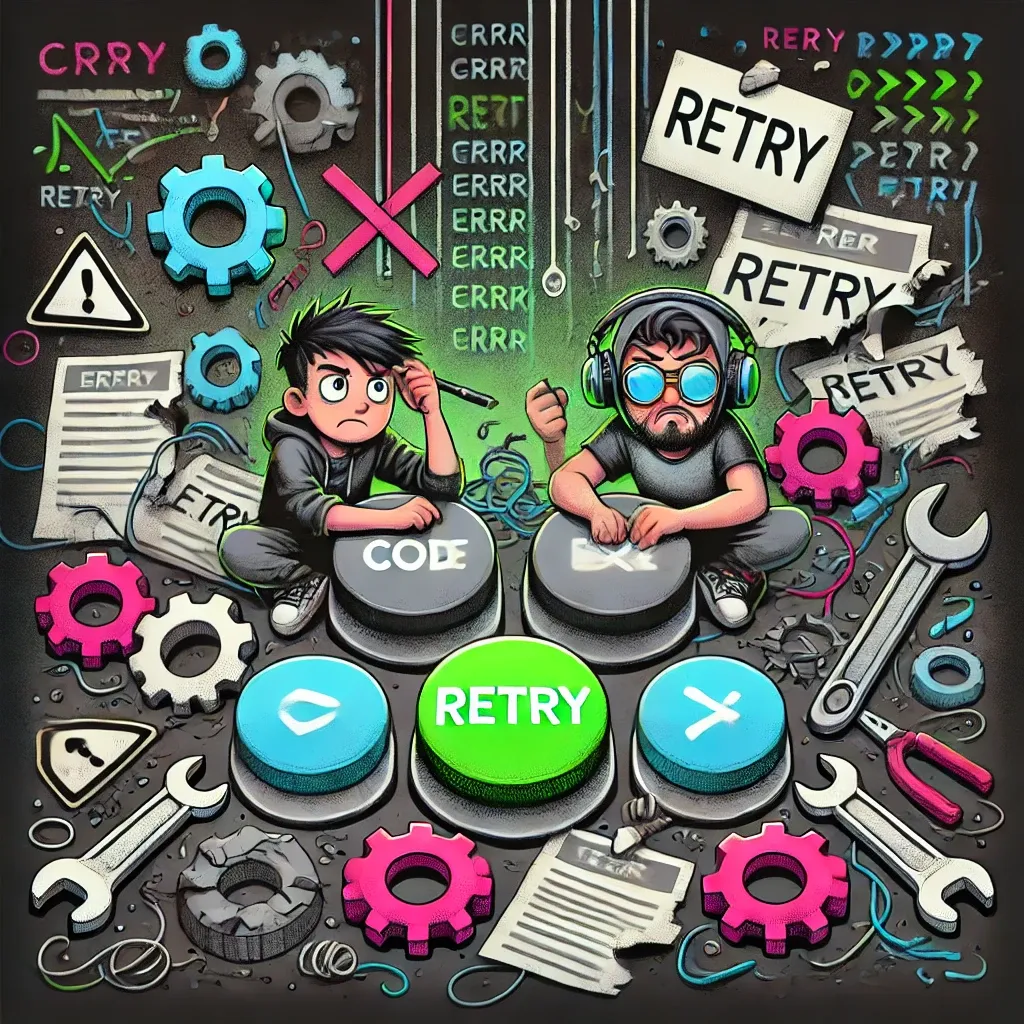Trial and Error Methodology in Software Development: Because Perfection is Overrated
Resorting to trial and error can be good for you and the software you write. Learn the value of this real world engineering practice.

If you think software development is about getting everything right the first time, you’re in for a long, painful ride. In reality, it’s more like throwing spaghetti at a wall and seeing what sticks — but, you know, with more lines of code and fewer carbs. Enter the trial and error methodology, the secret sauce for all those late-night “aha!” moments.
Trial and Error in Software Development: Why Perfection is Overrated
What is Trial and Error, Anyway?
You’re trying to solve a complex coding problem, and instead of meticulously plotting your course like a seasoned GPS navigator, you decide to throw spaghetti at the wall and see what sticks. That’s trial and error in a nutshell! It’s the process of experimenting with various solutions until you stumble upon the one that works — like finding the one perfectly ripened avocado in a pile of rock-hard impostors at the grocery store.
Here’s why trial and error is not just a last resort — it’s a legit, even smart, way to build software:
The Myth of Perfection
Somewhere along the way, someone probably told you that you need to write perfect code. Spoiler alert: that person was wrong. Perfect code doesn’t exist. Bugs, edge cases, and “oh-crap-why-is-it-doing-that” moments are all part of the game. The faster you get comfortable with failure, the faster you’ll get to the good stuff — like working software.
Trial and error embraces the fact that mistakes aren’t just inevitable; they’re informative. Breaking down complex problems often requires this mindset. Every error brings you closer to the solution, if you’re willing to learn from it. Think of it like debugging life. Each failure is a breadcrumb that leads you closer to what works. Critical thinking can help you analyze these failures more effectively.
Iterate, Iterate, Iterate
Trial and error is fundamentally about iteration. Write some code. See if it works. (Spoiler: it usually doesn’t.) Fix it. Test again. Repeat. Iteration is the lifeblood of agile development, and it’s how you move from “does this even compile?” to “this actually does what the user wants.”
Embrace the messiness. Using design patterns can help make this process more manageable. It’s like sculpting — you’re chipping away at the useless parts until what’s left is the solution. Your first version will never be the final masterpiece, but that’s okay. The important thing is that you’re moving, testing, and improving. Progress beats perfection every time.
The Value of Quick Failures
There’s a reason startup culture loves the phrase “fail fast.” It’s not because they’re masochists (well, not entirely). It’s because failing quickly means you’re learning quickly. When you’re not afraid to test something that might not work, you’re opening yourself up to discovering what will work.
Failure is feedback. It tells you, “this approach isn’t it, chief,” and nudges you toward something better. It’s like a built-in navigation system that reroutes you when you’ve taken a wrong turn — except instead of just one wrong turn, it’s more like 43. And instead of a polite voice, it’s your debugger screaming errors in red.
Why It’s Not Just for Kindergarten Science Projects
You might think that trial and error belongs in the dusty corners of childhood experiments involving baking soda and vinegar. But in the world of software development, it’s a legitimate methodology. Here’s why:
- Speed Over Perfection: Sometimes, waiting for everything to be perfect is a luxury you simply can’t afford. Trial and error allows you to iterate quickly. Release a version, watch it explode (metaphorically, please), gather feedback, and then improve. Rinse and repeat — like your favorite shampoo.
- Learning Through Failure: Remember that time you thought you could fix your code by shouting at the screen? (No? Just me?) Every failed attempt is a lesson in disguise. Embrace those oh-so-glorious bugs; they’re your friends! Each error provides insight into what doesn’t work, guiding you closer to what does.
- Real-World Applications: Let’s face it — most real-world problems are messy. Clients don’t always know what they want, and requirements can change faster than your internet connection during a Zoom call. A trial and error approach allows you to adapt and pivot like a pro when the tides inevitably turn.

Real Developers Get Their Hands Dirty
Trial and error isn’t just about solving technical problems; it’s about building resilience and creativity. Collaborative problem-solving can be a key part of this process. Real developers don’t sit around waiting for divine inspiration or the perfect plan. Handling legacy code often demands a willingness to dive in and experiment. They dive in, get their hands dirty, and figure things out along the way. It’s messy, sure, but that’s where the magic happens.
Every “error” is a puzzle piece that didn’t quite fit — but now you know something you didn’t before. And the more errors you encounter, the more you learn, and the sharper your instincts become. Over time, you start predicting the kind of spaghetti that’s going to stick, which makes you faster, more confident, and yes, even a little bit wiser.
The Steps to Mastering Trial and Error
Ready to embrace your inner chaos? Creative problem-solving techniques can be especially useful here. Here’s how to make the most of the trial and error methodology without losing your sanity (or your job):
- Define Your Goal: Before you start flinging code around like confetti, be clear about what you’re trying to achieve. Is it a new feature? A bug fix? A way to integrate your favorite memes into the user interface? Whatever it is, keep your eyes on the prize.
- Experiment Freely: Now, unleash your creativity! Write some code, change some variables, or even swap out libraries. Just be sure to document what you’re doing — because, trust me, you’ll want to remember that one time you accidentally turned the login page into a cat meme gallery.
- Analyze Results: Once you’ve thrown enough spaghetti, it’s time to see what stuck. Analyze the outcomes of your experiments. Did it work? Did it crash harder than a Windows 95 machine? Learn from these results and adjust your next batch of experiments accordingly.
- Iterate, Don’t Repeat: The goal here is to iterate. You’re not looking to endlessly repeat the same mistakes — unless, of course, you enjoy the taste of failure. Use your newfound knowledge to refine your approach. Remember, the road to success is paved with the remnants of past errors (and maybe a few coffee stains).
- Embrace Feedback: Whether it’s from your team, users, or that one colleague who just loves to critique everything, feedback is your best friend. Embrace it like a long-lost relative at a family reunion. It can provide insights you never considered and help steer your experiments in the right direction.
Perfection? Nah, Give Me Progress
Perfection is overrated, especially in software development. Things change too fast, requirements shift, users are unpredictable, and technology evolves. The perfect solution today could be outdated by next week. Trial and error, on the other hand, keeps you in the game. It’s adaptive, resilient, and, honestly, way more fun.
So, the next time you find yourself staring at a bug, wondering how you ended up here, remember: you’re doing it right. Trial and error is how software gets built. It’s not about avoiding mistakes; it’s about making the right ones, learning, and moving forward.
Because in software development, progress beats perfection — every single time.




